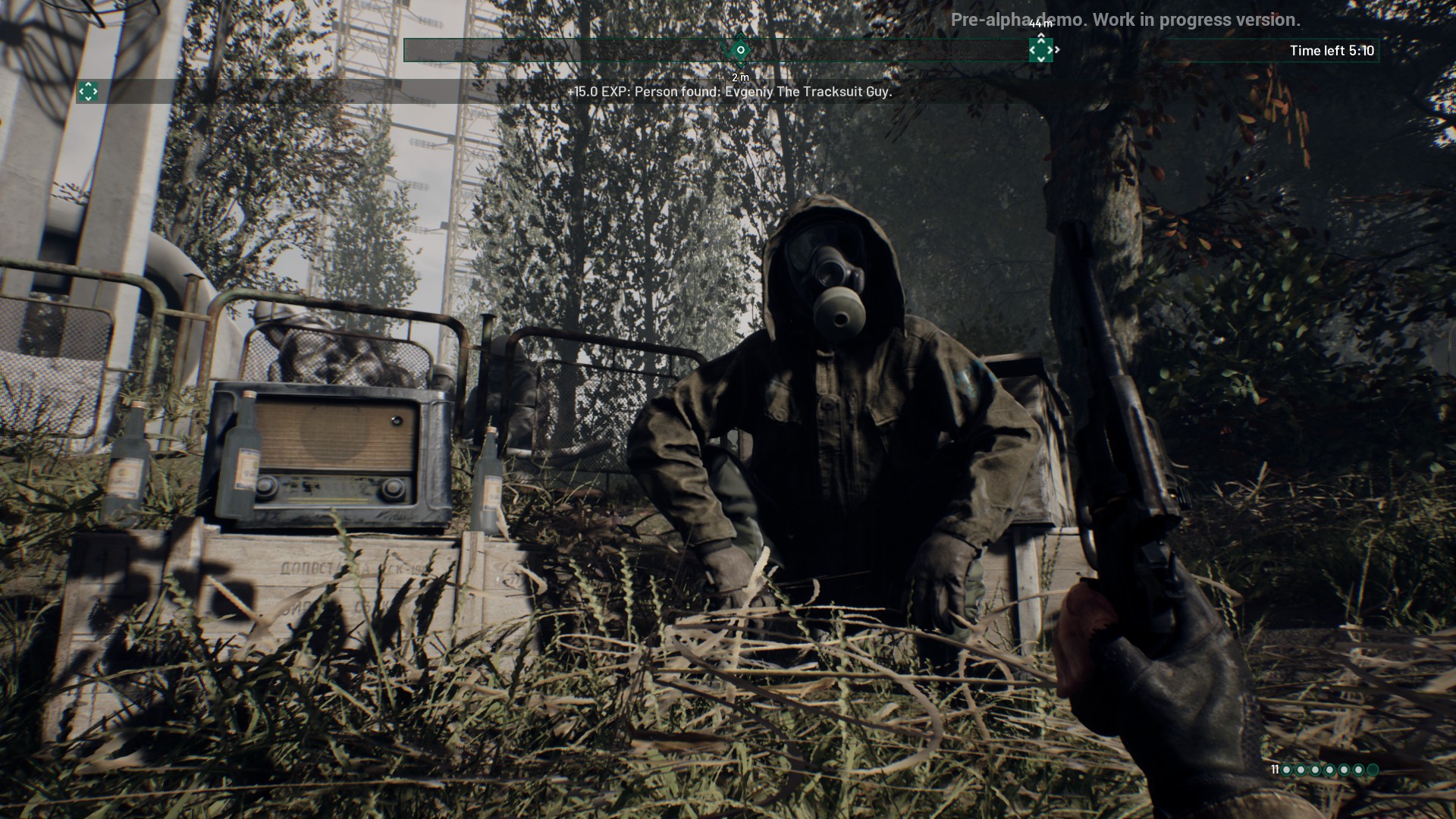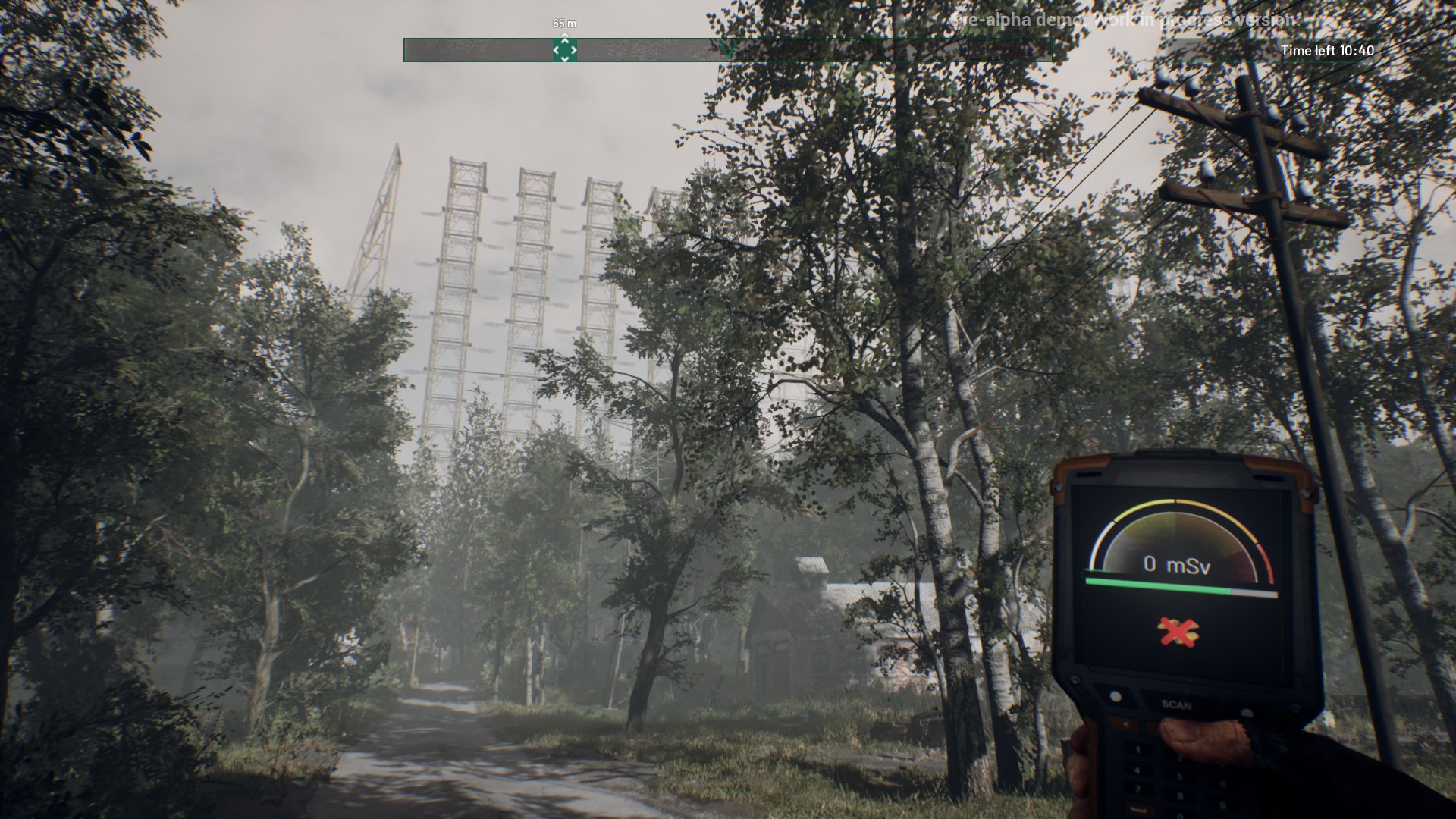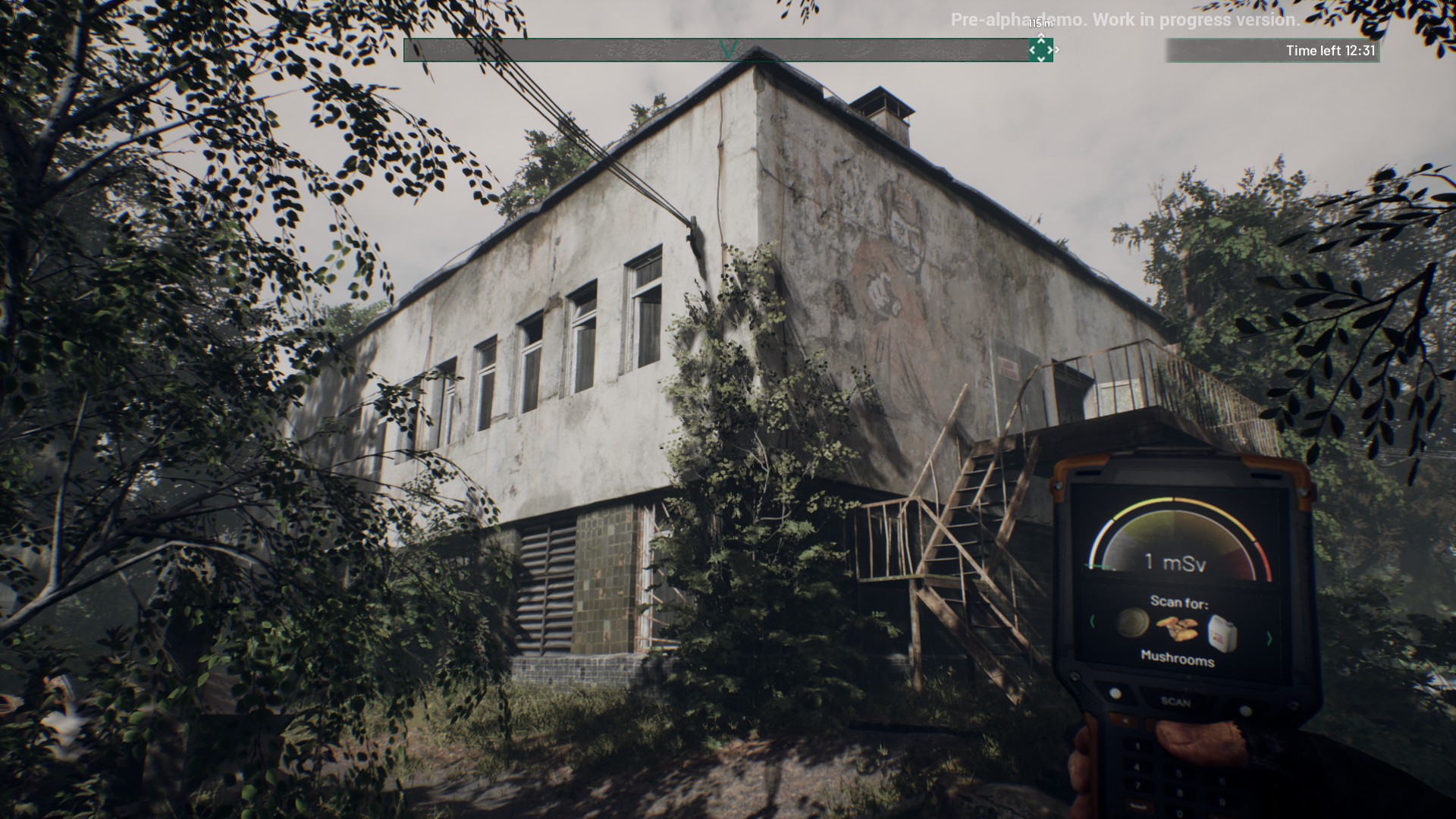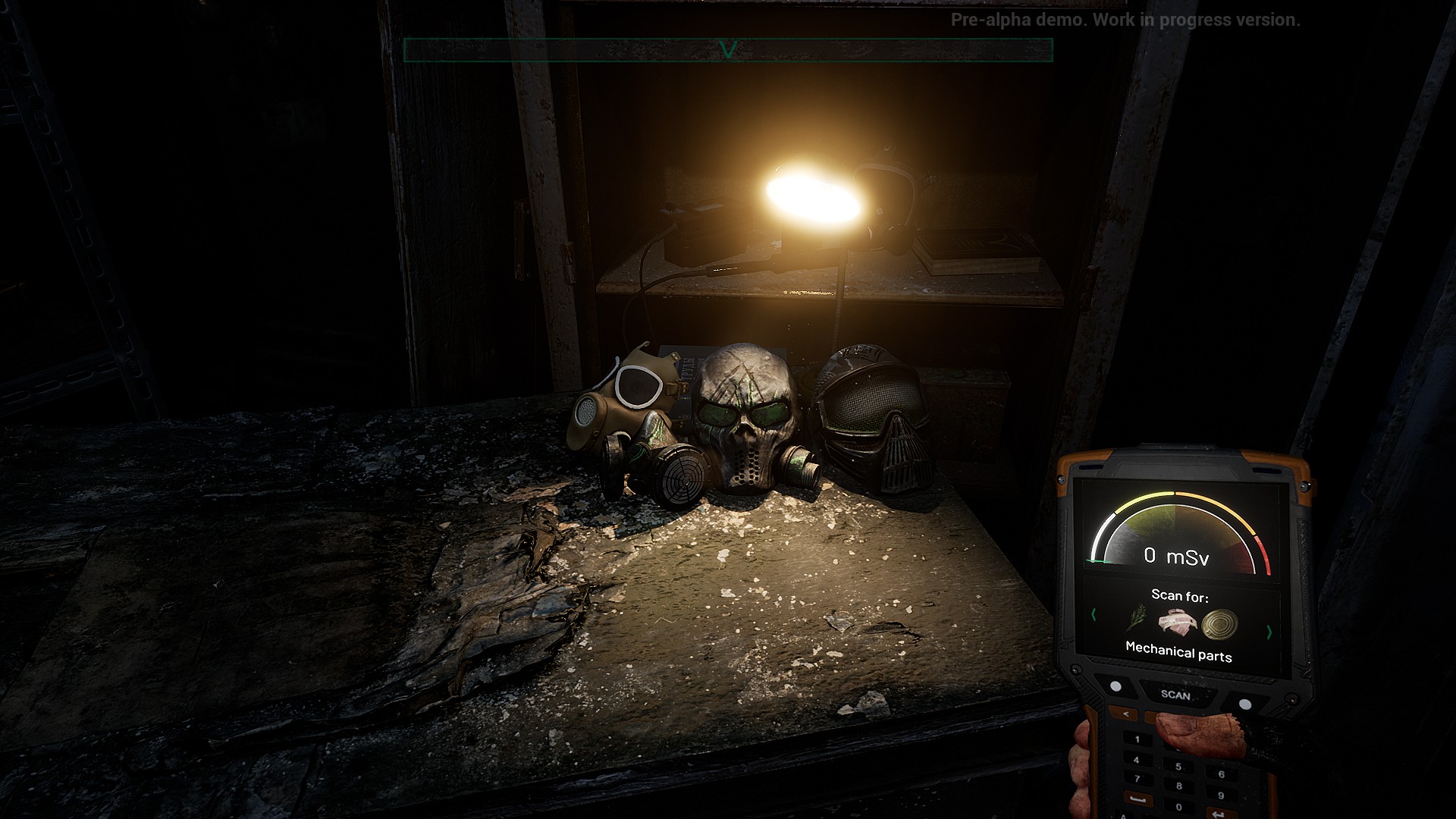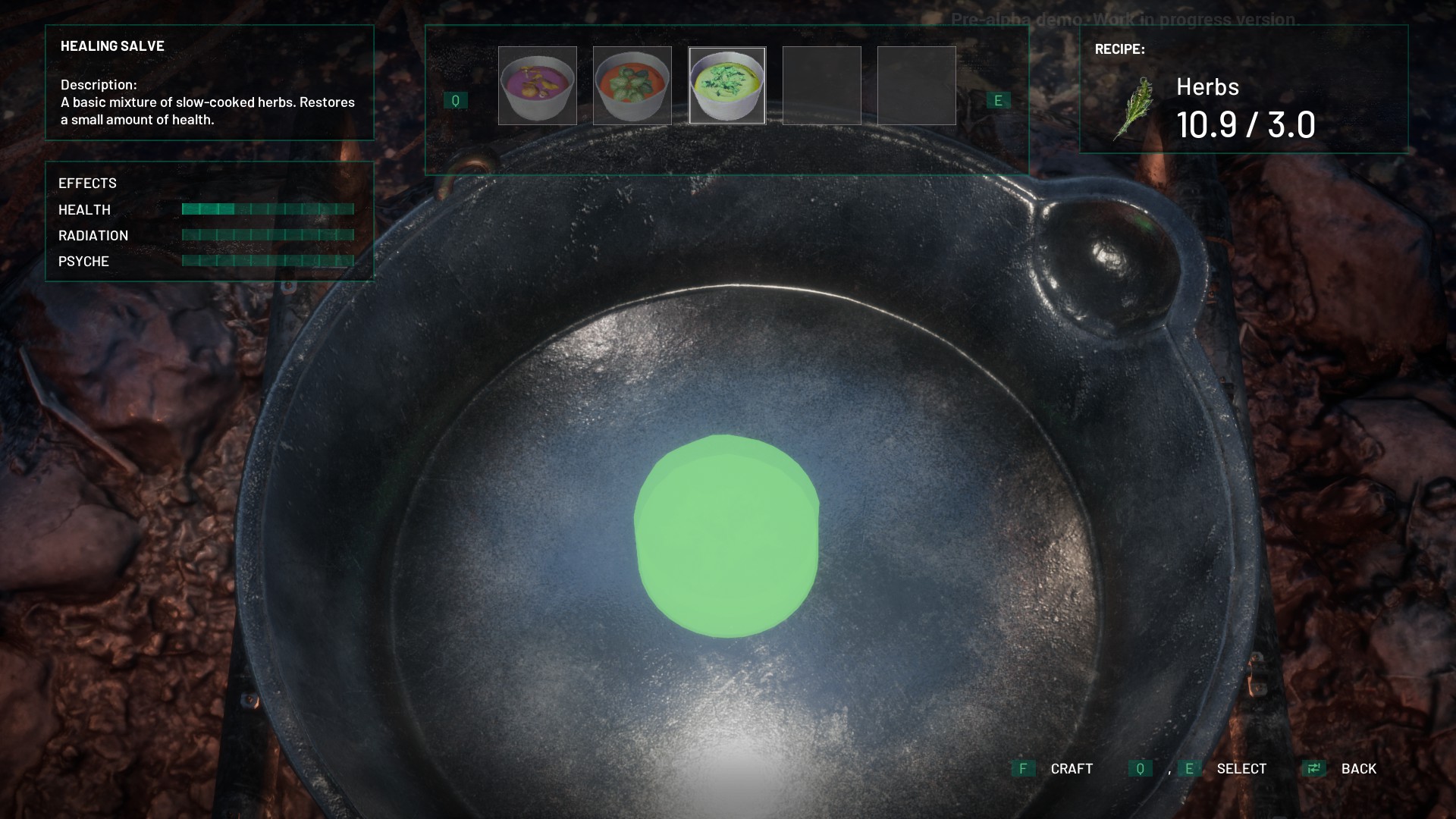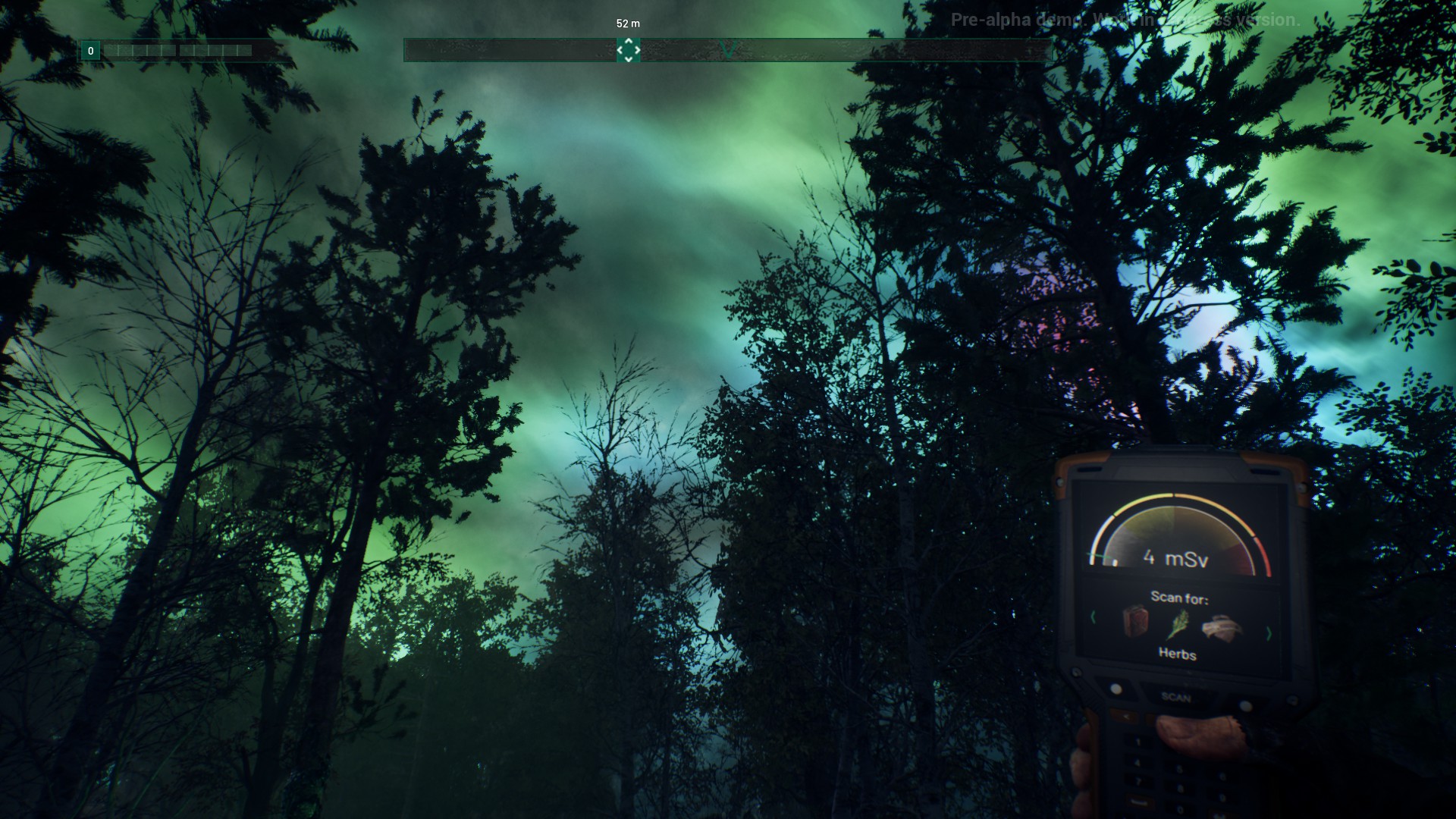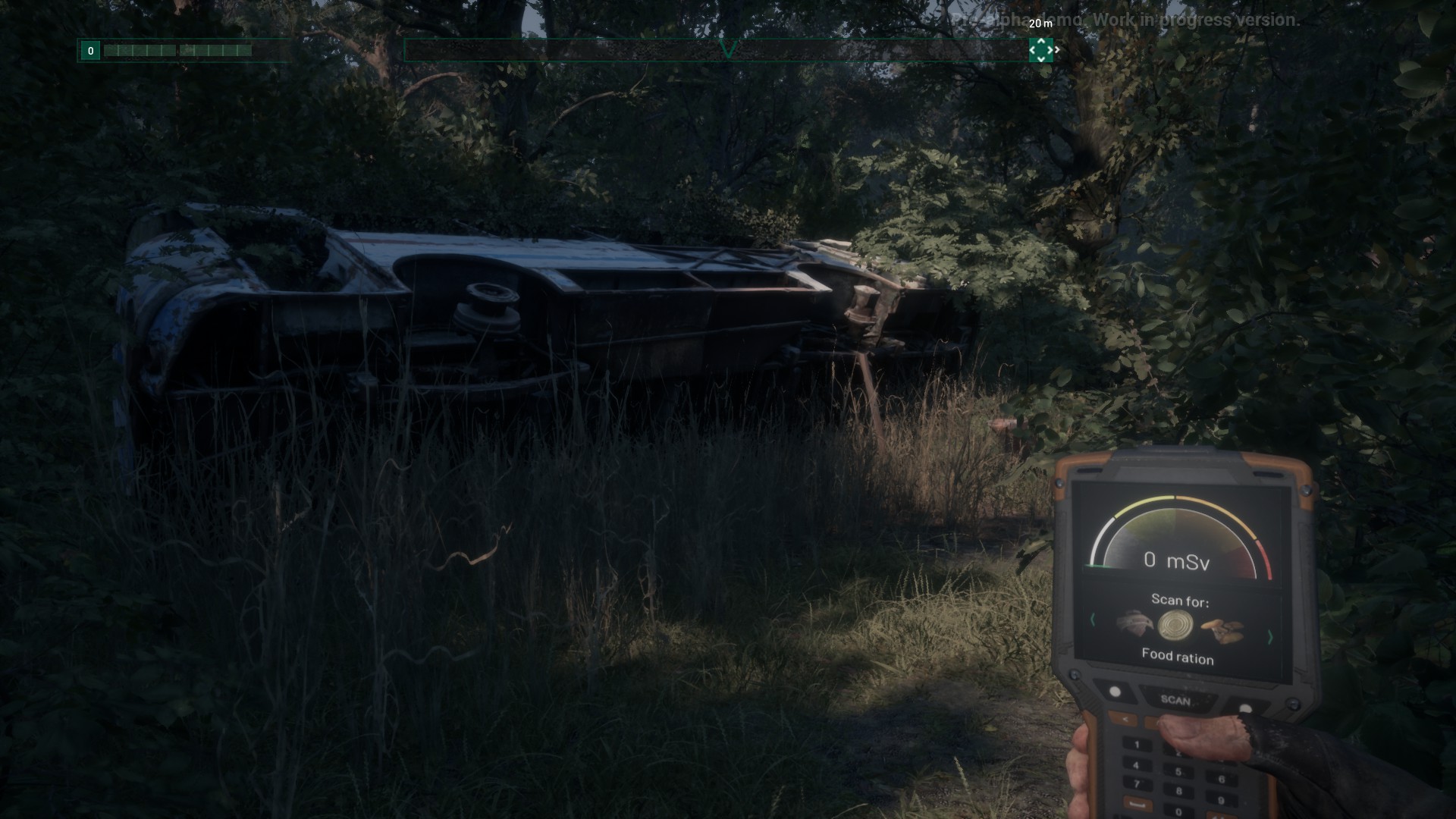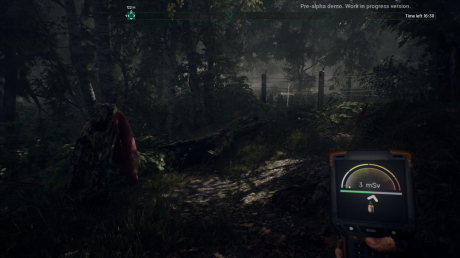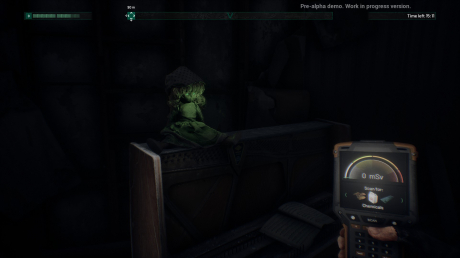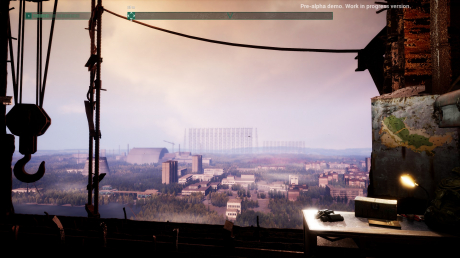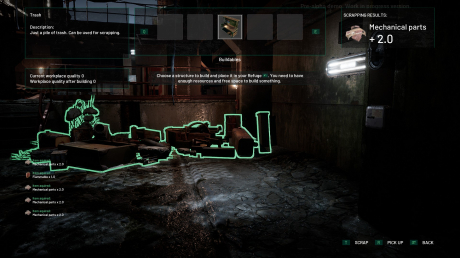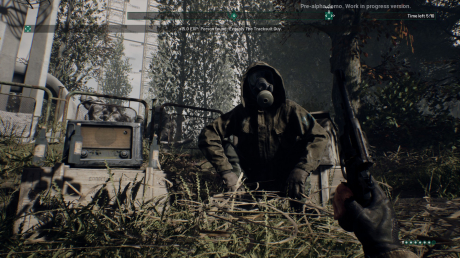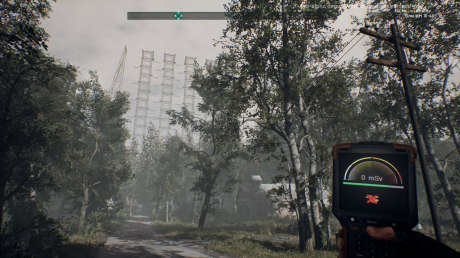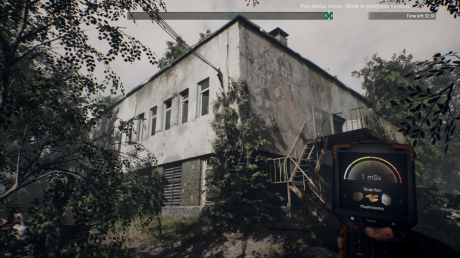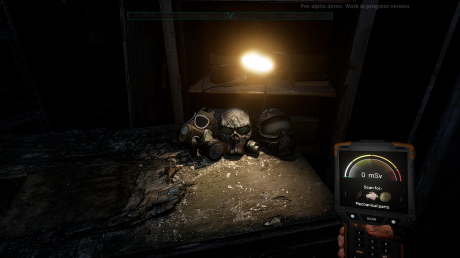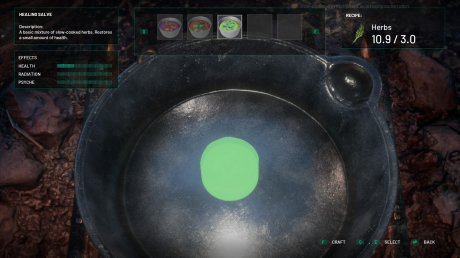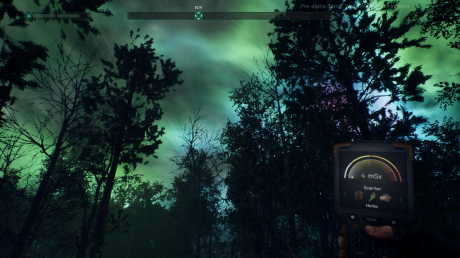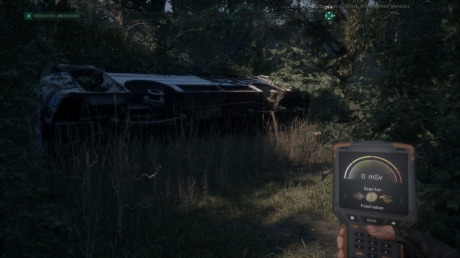Chernobylite puts you in the shoes of Igor, who after 30 years is looking for an explanation as to what happened to his fiancé. To do this he will travel to the desolate and still radiated area of Chernobyl where he will form a team along the way to investigate what exactly happened when she disappeared all those years ago. Note that the game has some horror elements, but these are kept to a minimum and are never scary, with only monsters being real threats.
You’ll quickly gain your first member during the first hour of the game or so, and from then on your choices will affect the story.
The game is divided into a set of medium sized open world levels that can be explored at will whenever you enter one. You can enter the levels by accepting missions that are provided by your team or by radio transmissions. The team and radio are always located in your base, where you can also put things like furniture, crafting benches and equipment. Think of devices to make ammo, upgrade weapons and to create Chernobylite (which I will also discuss in a little while), for example. In your base you will also have to take in account happiness (called comfort here), power, radiation security, air quality and number of beds. The more devices and crafting benches you place the more power it will use and the worse the air quality will get. Most of the times one thing affects another so you will have to keep a careful eye on things. You could do without ever building anything at all, but believe me, you won’t get far in the later missions where you need more powerful weapons, first aid kits and other important accessories, although you can find a lot in the levels themselves (even weapons with some upgraded attached to them). But prepare to build stuff.
Once you decide to go for a mission you can tell your team what they will have to do in the meantime. So you could send your ally/allies out to find medicine or ammo, or let them rest if their psyche and/or health is low. These missions are automatically completed and you’ll know beforehand how big the chance is they’ll actually succeed. Later on, when you have more allies, these decisions are easier as you can then split them up more evenly with bigger successes. When your main mission finishes (which can be finished the stealth or action way) theirs will also automatically finish and you’ll get the rewards you send them out for, and share the base provisions next. Sharing provisions is a nice idea, but I never ran out. After finishing a mission you can choose to meet your team’s demands for your base, build/upgrade some stuff for yourself or go to sleep which will trigger the next day and usually the next mission(s) with it.
When you’re doing missions you can also choose to explore. You have an Elder Scrolls-like compass that shows you question marks if you haven’t yet discovered it yet. These questions marks can range from important persons/traders to finding clues. With these clues, provided you have found all of the required clues, you can trigger a memory (which is basically a little preset story set in a walking simulator kind of scene) to unlock more of the backstory. There are several of these memories to be unlocked.
During exploration you also have a Geiger counter that can measure if you’re exposed to radiation. Getting exposed lowers your health (not your maximum health) unless you use food to restore it. Same goes for psyche which lowers when you see monsters or whenever you kill enemies, but it can be restored by eating and drinking as well.
Your Geiger counter can also scan the environment for specific types of collectibles like herbs, mushrooms, electronic boards and gas cans. And these naturally can be used to upgrade your base and weapons and to create consumables and ammo.
All of it; exploring, base building and completing quests earns you experience that, when earned enough, levels you up and allows you to unlock skills by talking to your team members. Each member has their own skills they can teach you so if you lose a member during the story you won’t be able to get those skills unless you can get him/her back. Some examples of skills are the ability to run faster, have the Geiger counter scan faster or have weapons do more damage. All of these skills have a nice, although unnecessary, scene where you’re told (and taught) the skill in person. It doesn’t add anything, but definitely adds to the immersion.
It’s not entirely clear how much experience you earn from what exactly, you sometimes can see it in the corner of your eye, but this definitely could’ve been improved during its Early Access period.
Making decisions during the missions can also influence your relationship with usually two of them. Killing or sparing a certain enemy might make one person happy and another one angry, for example. Make enough bad decisions and the team member might not join your heist in the end so it’s important to keep things balanced and keep everyone as happy as you can. Members can get lost or not join you on your heist.
But a heist you say? That’s right. When you’ve acquired enough tools, members and facts during your missions you can initiate a heist near the end of the game. Every member of the team will have a task assigned to him or her, by you, before the heist begins that will trigger when the right moment has come during the heist itself. It’s not required to do all of the main missions, but to pull off the perfect heist you need to have everything set up perfectly in advance, including the aforementioned requirements.
Having only two members will fail the mission, no matter what you do. Don’t despair, however, because if you die during the heist you’ll have the ability to change the past. This kind of makes making choices seem meaningless unfortunately, especially when you think you made an impactful choice early on. But anyway, what you’ll do when it happens is you enter a memory-like state and you can pass stones that each show the choice you made in the past. Activate a stone and - provided you have found or created enough Chernobylite (which is also used for creating portals back to your base) - you can alter the past and make a different choice. You then get transported to the exact same moment the choice was made and choose the alternate one for three Chernobylite. And then you get transported back to the same memory-like state as before where you can make more choices if you want. If a stone is red then a different choice has to be made: it’s required to finish the story.
If you try the heist again eventually you’re also able to continue from where you left of (i.e. died). So the checkpoints are generously placed, and I applaud the developers for not artificially lengthening the game by making me redo the entire missions.
Chernobylite is a very pretty game with immersive first person moments and a moody, radiated setting. The characters all have masks because of this radiation, and only have portraits with human faces during conversations. While it’s an understandable choice it does feel a bit like an easy way out as far as character design is concerned. Besides that they’re nicely animated with the exception of Sashko who has some awkward animations. The world, base and basically everything else looks pretty great, though.
The music is solid and even sounds a bit ominous at times. The voice acting, in Russian, is strong, and convincingly delivered, even if I don’t speak the language.
Chernobylite successfully mixes several genres into one greater, medium sized game. It has a lot of ambition and the game’s mechanics all work together in almost perfect harmony, miraculously. Don’t sleep on this game as it’s one of the better games of 2021 and I think it will fly under a lot of people’s radars.
Zitat:
If you enjoyed this review please consider following me:
curator page 



